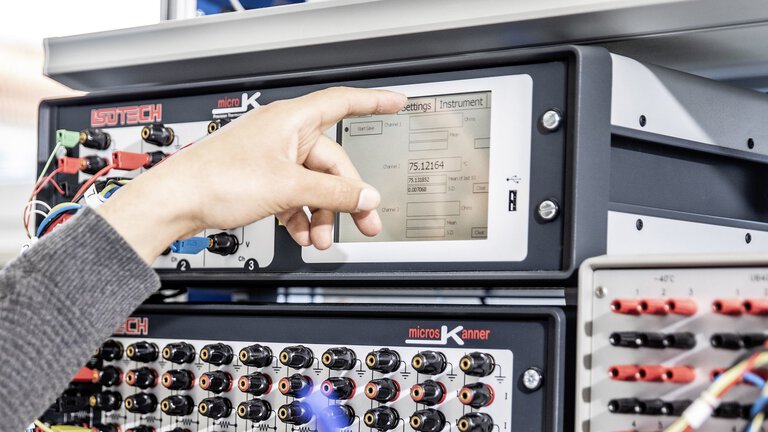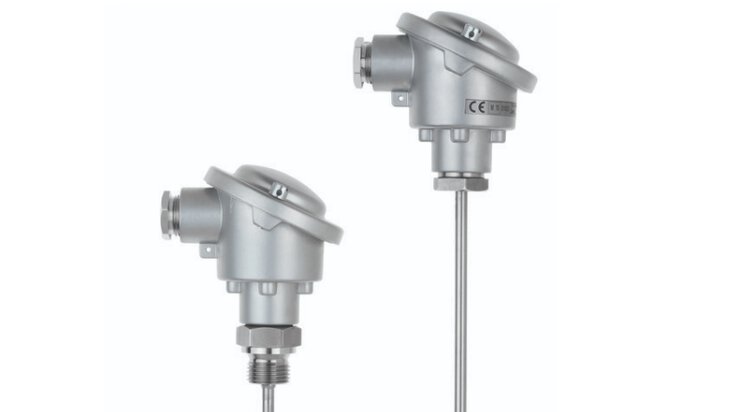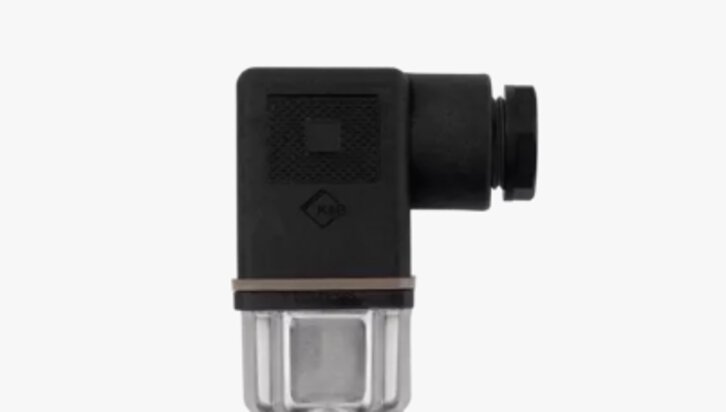

How to improve the accuracy of temperature and pressure measurements? Temperature sensor calibration and cold junction compensation
Nowadays, automation and quality control are of great importance in production processes. It is extremely important to measure temperature and pressure accurately, as even the smallest errors can lead to serious consequences. We have prepared for you effective ways to reduce errors and suggestions for accurate measuring equipment. Read on and protect your company from potential problems today!
Measurement errors in the use of temperature sensors
Two types of errors can be distinguished in temperature monitoring: systematic and random. Systematic errors result from incorrectly calibrated measuring equipment or from imperfections in the equipment itself. On the other hand, errors
random are caused by variations in the measurement conditions, such as fluctuations in ambient temperature or electrical noise.
Factors affecting the accuracy of temperature measurements include:
- physical properties of the materials from which the measuring probes are made
- quality and condition of cable insulation
- ambient temperature, which may affect the accuracy of readings

Systematic and random errors may occur in temperature measurements
How to reduce measurement errors of temperature sensors?
In order to reduce measurement errors in temperature monitoring, it is useful to apply a few simple measures, such as:
Regular calibration of temperature sensors
Calibration is an important step in ensuring the accuracy of temperature measurements. Calibration
of temperature sensors should be carried out by specialists in accordance with procedures and standards. In general, it is recommended to calibrate temperature sensors regularly, usually every 6 to 12 months. However, there are some exceptions, for example for sensors used in extreme environments or in industries with special requirements, where calibrations may be needed more frequently.
Choosing the right measuring sensors
On the subject of selecting suitable measuring sensors, pay attention to several aspects:
- Quality of manufacture: Choose measuring probes from reputable manufacturers who are known for the high quality of their products. Ensuring the robust construction and durability of the probe is important, especially in harsh environments.
- Calibration certificates: Ensure that the probes you select have calibration certificates. The certificate confirms that the probe has been tested and calibrated by accredited laboratories, guaranteeing its accuracy and reliability.
- Matching the application: Before selecting a measuring probe, the conditions and requirements of the application should be carefully analysed. For example, if you are dealing with high temperatures, a probe with high temperature resistance or a special heat shield may be necessary.
If in doubt, it is always advisable to consult an expert or manufacturer who can help you select the right solution.
Selecting a suitable installation location for measuring probes
To reduce measurement errors in temperature monitoring, it is important to place the probes appropriately. Avoid locations where there are sudden changes in temperature, such as close to heat sources or in draughts. Make sure that the sensor is in a location that is representative of the monitored temperature being monitored.
In addition, ensure that the sensor is adequately insulated to reduce the influence of external factors. You can use heat shields, thermal insulation or protection against moisture and dust. Also remember easy access to the sensor for maintenance, calibration or possible replacement. The mounting location should be convenient for technical personnel.
Compensation of the cold junction of the thermocouple
Compensation of the cold junction in thermocouples serves to correct temperature measurements. The cold junction of the thermocouple, which is where the wires connect to the measuring device, should ideally be kept at 0°C. In reality, holding the cold junction in an ice bath is awkward, so this temperature difference is compensated for by adding or subtracting a small voltage. The process of compensating for a cold joint requires a special circuit electronic circuit or a thermal compensator.
Measuring errors in pressure sensors
In the case of measurement errors in pressure monitoring, a distinction must also be made between systematic and random. Systematic errors are those that are repeated in each measurement and are due to a malfunction of the measuring device or external disturbing factors. Random errors, on the other hand, are the result of random factors interfering with the measurement and can only occur in single measurements.
Examples of factors affecting the accuracy of pressure measurements include:
- the construction materials used in the vicinity of the measurement joints,
- the effect of temperature on measurement accuracy,
- impurities in the liquid or gas being measured,
- vibrations,
- influence of electromagnetic radiation.
How to reduce the measurement errors of pressure sensors?
To reduce the measurement errors of pressure sensors, mostly the same methods are used as for temperature sensors. Equally important here is regular calibration, selection of a sensor with a measurement range adapted to the application measuring range, installation in a suitable location (where there are no turbulence vibrations or temperature spikes) or the use of compensation systems. The condition of the sensor should also be checked regularly for mechanical damage, dirt or play.

Regular calibration of pressure transmitters is important for measurement accuracy
Temperature and pressure sensors and transmitters - the JUMO range
We offer a variety of temperature and pressure monitoring devices designed to meet the different needs and requirements of production processes. JUMO's product range includes resistance thermometers, thermocouples,
pressure transmitters, digital pressure gauges and many more.
You will also find specialised solutions such as, for example, thermometers for measuring temperatures in liquids or aggressive gases, pressure transmitters for high temperatures and much more. In this way, you can select a device perfectly suited to the needs of your production process. Contact us and receive a quote now!

JUMO has a wide range of specialised instruments for temperature and pressure measurement
Measurement errors in temperature and pressure monitoring - summary
In this article, we have discussed the most important measurement errors in temperature and pressure monitoring and presented ways to correct them. Keeping an eye on
regular calibration of temperature sensors and pressure transmitters,
using high quality and process-matched measuring probes,
the correct installation location of measuring probes are just some of the simple ways to improve the accuracy of temperature measurements. In the case of thermocouples, cold junction compensation is also an important factor to remove errors due to temperature differences.
If you are looking for temperature and pressure monitoring equipment or calibration services, contact the experts at JUMO, who can help you select the right solutions to suit your needs and production process specifications. Trust our experience and high-quality products to ensure accuracy and reliability in your process monitoring!
- ${title}${badge}


